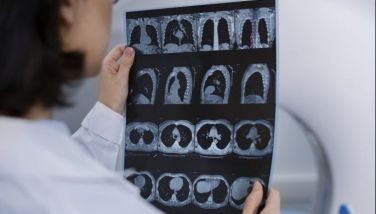Shot in the arm for generics

October 25, 2006 | 12:00am
Since medicines sell in India for a fraction of the prices in RP, it’s only logical to buy from there. Still, the government’s Philippine International Trading Corp. must proceed with caution.
By law the PITC may resell only brands whose patents have expired. But importing dead-patent drugs in bulk could be messy on the economy. It could provoke drug makers in Manila to jack up prices of live-patent brands to make up for lost margins. Or it could drive them out of business. Serves them right for pricing their wares three to thirty times than in India (Gotcha, 23 Oct. 2006), and for raking in mega-profits during 30 years with patents. But then, those companies happen to employ Filipinos who could be sent to the poorhouse.
Even if it wanted to, the PITC also cannot import enough stocks for a showdown with the big drug makers. It doesn’t have the money. When Sen. Mar Roxas began parallel importations as trade secretary in 2000, he had only P400 million to go around. PITC chairman Roberto Pagdanganan has P700 million on hand these days, but it’s still a drop in the bucket. Drug sales in RP hit $2 billion, or P100 billion, in 2005; Pagdanganan’s "increased capital" is still less than one percent of the volume. Barely will it stock 1,500 rolling drugstores (Botica ng Bayan) with 50 or so brands – not to mention 8,000 waiting barangay public pharmacies and government hospitals. It’s unlikely that Congress will buck the pharmaceutical lobby to give the PITC sufficient cash to dent the market.
Pagdanganan’s only option is to let local generics makers provide the fund muscle, with full government support. The PITC can help the locals to research what drugs are in great demand or for what ailments, for precise mass production. The health department, for its part, can tap government media outlets to campaign for generics use, at a much lower budget than brand owners spend to push brands through advertising and prescribing. In the end, going generics would not only be cheaper for consumers; it also will drive up employment and local trade in raw materials. So the PITC strategy is to import dead-patent brands from India, and also sell locally made generic versions.
But even in generics, Pagdanganan skirmishes with multinational firms, whom he accuses of scaring consumers against unbranded drugs. He cites a series of ads allegedly designed to make buyers think that any drug without generic names, confusedly those with only generic names, are fake. Gloria Rivamonte, a generics maker, adds that multinationals fete doctors with junkets to prescribe their brands against generic counterparts. That’s why ever since the Generics Act was passed in Sept. 1998, sales of generics grew to only three percent of total drug volume, Pagdanganan laments. By contrast, generics dominate 65 percent of the American market.
The Pharmaceuticals and Healthcare Association of the Philippines, that groups mostly multinationals, denies the charges. "Some of our members are into generics," its assistant vice president Eufe Tantia says, "so how can we go against generics?" The ads that Pagdanganan cite, truth to tell, were co-sponsored by the trade department, of which the PITC is an attached agency, Tantia adds. And the so-called anti-generic content was actually innocent anti-counterfeiting information provided by the Bureau of Food and Drugs. If generics are not making headway, Tantia concludes, it could be due to scant promoting by the health department.
Their differences notwithstanding, Pagdanganan and some multinationals have gotten together to bring down prices of certain brands. GlaxoSmithKline, Abbott, Boehringer Ingelheim, Bayer and Servier are offering discounts on some hot-sellers, and cheaper second-tier brands. An unintended effect was to encourage local generics makers to band together to match the industry biggies. And so were born relatively big distribution unions like Amvasc, Pinoy Quality Medicines, and Gamot ng Bayan.
The participating multinationals and the locals sell their products in Botica ng Bayan outlets for only one-fourth to one-half the price tags in regular pharmacies. These include vitamins, antibiotics, antihistamines, antispasmodics, anticonvulsants, anti-emetics, analgesics, dermatological preparations, and medicines for diabetes, hypertension, viral infection, and asthma.
Motorists are grumbling about the alarming number of motorcycles on the road. Exchanges of gory accident photos on the Net and of stories of near misses by careless bikers invariably end with the question: when will the government ever draft a policy on pesky two-wheelers? The hope is for officials to write one soon, and not wait for calamity, like the dismantling of all ad billboards after some collapsed from typhoon.
In truth there’s no need for new rules, only enforcement of old laws. For instance, any driver, of car or bike, must not recklessly swerve in and out of lanes. Too, bikers must wear regulation helmets, not plastic caps that, according to trauma surgeon Orlando Ocampo, will only help to keep their brains from scattering far from a crash site. The doctor from the Far Eastern University Hospital also reminds bikers that babies and toddlers may not ride motorcycles because these are not designed for them.
What the officials can do is designate bike lanes on major thoroughfares; in the absence of any, bikers would be safe to stay on the slow lane. It’s foolish of them to stop and crowd on the fast lane under a pedestrian overpass during a downpour, as if waiting for a drug-crazed trucker with faulty headlights and windshield wipers to wham them like bowling pins.
E-mail: jariusbondoc@workmail.com
By law the PITC may resell only brands whose patents have expired. But importing dead-patent drugs in bulk could be messy on the economy. It could provoke drug makers in Manila to jack up prices of live-patent brands to make up for lost margins. Or it could drive them out of business. Serves them right for pricing their wares three to thirty times than in India (Gotcha, 23 Oct. 2006), and for raking in mega-profits during 30 years with patents. But then, those companies happen to employ Filipinos who could be sent to the poorhouse.
Even if it wanted to, the PITC also cannot import enough stocks for a showdown with the big drug makers. It doesn’t have the money. When Sen. Mar Roxas began parallel importations as trade secretary in 2000, he had only P400 million to go around. PITC chairman Roberto Pagdanganan has P700 million on hand these days, but it’s still a drop in the bucket. Drug sales in RP hit $2 billion, or P100 billion, in 2005; Pagdanganan’s "increased capital" is still less than one percent of the volume. Barely will it stock 1,500 rolling drugstores (Botica ng Bayan) with 50 or so brands – not to mention 8,000 waiting barangay public pharmacies and government hospitals. It’s unlikely that Congress will buck the pharmaceutical lobby to give the PITC sufficient cash to dent the market.

Pagdanganan’s only option is to let local generics makers provide the fund muscle, with full government support. The PITC can help the locals to research what drugs are in great demand or for what ailments, for precise mass production. The health department, for its part, can tap government media outlets to campaign for generics use, at a much lower budget than brand owners spend to push brands through advertising and prescribing. In the end, going generics would not only be cheaper for consumers; it also will drive up employment and local trade in raw materials. So the PITC strategy is to import dead-patent brands from India, and also sell locally made generic versions.
But even in generics, Pagdanganan skirmishes with multinational firms, whom he accuses of scaring consumers against unbranded drugs. He cites a series of ads allegedly designed to make buyers think that any drug without generic names, confusedly those with only generic names, are fake. Gloria Rivamonte, a generics maker, adds that multinationals fete doctors with junkets to prescribe their brands against generic counterparts. That’s why ever since the Generics Act was passed in Sept. 1998, sales of generics grew to only three percent of total drug volume, Pagdanganan laments. By contrast, generics dominate 65 percent of the American market.
The Pharmaceuticals and Healthcare Association of the Philippines, that groups mostly multinationals, denies the charges. "Some of our members are into generics," its assistant vice president Eufe Tantia says, "so how can we go against generics?" The ads that Pagdanganan cite, truth to tell, were co-sponsored by the trade department, of which the PITC is an attached agency, Tantia adds. And the so-called anti-generic content was actually innocent anti-counterfeiting information provided by the Bureau of Food and Drugs. If generics are not making headway, Tantia concludes, it could be due to scant promoting by the health department.
Their differences notwithstanding, Pagdanganan and some multinationals have gotten together to bring down prices of certain brands. GlaxoSmithKline, Abbott, Boehringer Ingelheim, Bayer and Servier are offering discounts on some hot-sellers, and cheaper second-tier brands. An unintended effect was to encourage local generics makers to band together to match the industry biggies. And so were born relatively big distribution unions like Amvasc, Pinoy Quality Medicines, and Gamot ng Bayan.
The participating multinationals and the locals sell their products in Botica ng Bayan outlets for only one-fourth to one-half the price tags in regular pharmacies. These include vitamins, antibiotics, antihistamines, antispasmodics, anticonvulsants, anti-emetics, analgesics, dermatological preparations, and medicines for diabetes, hypertension, viral infection, and asthma.
In truth there’s no need for new rules, only enforcement of old laws. For instance, any driver, of car or bike, must not recklessly swerve in and out of lanes. Too, bikers must wear regulation helmets, not plastic caps that, according to trauma surgeon Orlando Ocampo, will only help to keep their brains from scattering far from a crash site. The doctor from the Far Eastern University Hospital also reminds bikers that babies and toddlers may not ride motorcycles because these are not designed for them.
What the officials can do is designate bike lanes on major thoroughfares; in the absence of any, bikers would be safe to stay on the slow lane. It’s foolish of them to stop and crowd on the fast lane under a pedestrian overpass during a downpour, as if waiting for a drug-crazed trucker with faulty headlights and windshield wipers to wham them like bowling pins.
BrandSpace Articles
<
>
- Latest
- Trending
Trending
Latest






















